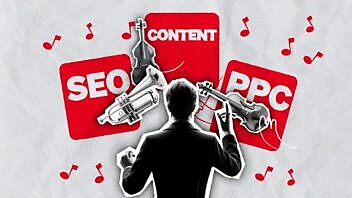When people ask about our professions, for some reason we not only tend to answer but answer truthfully.
If you’re a writer, these encounters can feel a bit thorny. Your profession is also an essential everyday activity; an activity this other person also carries out. Therefore, couched within “Er, I’m a writer” is a claim that you’re expert at something at which everybody else is to some extent competent. As opposed to say, astrophysics or underwater cinematography.
“Hi, you look less boring than the person next to you. What do you do for a living?”
“I’m a counter.”
“What?”
“I’m a counter. I count numbers for a living.”
“No you don’t. Leave me alone.”
Is this so different? And yet if you are a writer, this will sting, because writing is hard. Specifically, writing in order to do something more than communicate. Purely communicative, functional writing – ‘Get me some eggs’, ‘Stop poking my dog’, ‘Why weren’t you breathing when I left?’ – is less difficult, largely because we’re taught how to do it from a very young age. But writing to convince, entertain, upset, provoke, inform – prodding those buttons – is hard.
Roses are red.
Bacon is also red.
Poems are hard.
Bacon.— Bill Murray (@BiIIMurray) October 5, 2013
Think about the last time you tried to be funny on Twitter. How did that work out for you? (Not you, Sean, you mutant jester.) Difficult, isn’t it? Or maybe you recently appealed a parking fine for humane reasons rather than by quoting at length from section 27 subsection (q) paragraph 11.3 of the Nobody Can Do Anything Anymore Act of 1979.
It’s hard because, unlike in maths, there are no formulae in writing once you elevate it beyond the everyday. As a result, the lines between functional and professional writing are blurred as buggery. When you sit down to write that letter about your parking fine the parameters are horribly broad. I know I need to spell all the words correctly and put them in the right order, but which words should I use? Of the 900 reasons I don’t deserve this bastard fine, which reasons are most likely to persuade them? Would an em dash make this sentence more or less compelling? Why am I pathologically unable to check parking restrictions?
Hence my aim here is to lure you towards the ascetic but rewarding embrace of B2B copywriting.
Okay, go on then. Sell it to me.
I know people think copywriting is about selling stuff, but that opinion is about as up to date as your CD collection. No. It’s about making yourself useful to your readers. They are looking for something – otherwise they wouldn’t have found your content – so tell them what they want to know and make it as enjoyable as possible for them in the process.
If you’ve ever had piano lessons, learning to produce B2B copy is the equivalent of learning Hanon, Czerny or Pischna’s technical exercises. Although I only do physical exercise by accident, I guess the athletic equivalent would be a personal trainer. I’m not saying B2B copy is itself difficult and occasionally vomit-inducing – I’m saying the process of becoming good at it can be those things. It’s a tough workout. But in return you get the frameworks, rules and parameters you need to become a more effective writer.
But how will it make me a better writer?
The audience for your B2B copy is not reading for pleasure – they’re reading for a purpose. It might be to learn more about new technology; make a business case to their boss; figure out the difference between four seemingly identical products. Whatever it is, it’s concrete, and you’ll either fulfil their requirements or you won’t. That’s not to say they mustn’t derive pleasure from reading your copy (more on that in a minute) but that isn’t why you’re writing or why they’re reading.
No B2B copy should be written without a decent idea of who is going to read it and what they’re looking for. These are strict parameters. There’s no going off-piste or Googling pop culture references. Every phrase needs to be of value, every paragraph needs to make a point and every point has to be germane to your overall argument.
Isn’t that just good writing? Well no, because ‘good’ depends on what you’re after. If you’re after some thought-provoking, entertaining fiction then ‘good’ writing can meander tangentially for 100 pages or deliberately destroy its narrative structure to reflect the collapse of reality (I just re-read Glamorama). The critical difference is the relationship between you and your readers. When your difficult second novel is finally published, your devoted readers will buy it because you wrote it. In B2B you have no such relationship with your readers, so you aren’t afforded the time for wordplay, avant-garde narrative structures or nods to the fourth wall. As a B2B writer, you have to get out of the way.
Begrudgingly sidestepping the limelight doesn’t mean your writing should shrivel up and begin attracting flies. On the contrary, the best B2B writing deals with complex information so succinctly and eloquently that it’s both informative and enjoyable to read. The tricky part is that you’re limited to words and phrases that impart information more than they perform any other function. If writing a novel is like hanging beautiful paintings in a royal palace, the B2B copywriting gallery consists of whitewashed walls with dark grey edging and a few Halogen uplights. It complements the pieces and sets them in context – without it there would be nowhere to hang them – but nobody leaves the gallery talking about the walls.
After a while you’ll be able to separate the things that make your writing yours from the essential components of good writing itself.
I know this because I am in the middle of doing it and have been in squelching around in that middle for some time. I regularly fall foul of everything I’m talking about here. In Doug-terms (Kesslerese? See, I’m doing it right now), I’m a shallow, blathering, wordsmithing one-voice pony. But you can’t keep those traits in check unless you identify them first.
Then, when you go to write your own stuff, you’ll find a couple of extra voices in your head.
“What is that word for? You don’t even know what it means, do you?”
“You know that little voice telling you your argument’s shit? Yeah, it’s me. And who are you calling little?”
“I don’t care if ‘the rhythm is better’ when it’s taken you 248 words to achieve your fucking ‘rhythm’, you ape. Start again.”
“Paragraphs are like organs; it should matter if you remove them. So which shall I remove – that paragraph or your spleen?”
Admittedly they’re not the most charming of all the voices but they are useful. This new level of rigour means that when you do decide to add some colour to your own writing – a clever turn of phrase, a cultural reference, a rhyming couplet (well you might) – it will have been thoroughly vetted, rather than just chucked into the mix because you’re so bored of whatever it was you originally set out to say and you wish you were funnier on Twitter.
TL;DR: B2B copywriting teaches you how to:
- Get out of the way of what you’re saying
- Be more disciplined about when to add bits of yourself back in
- Be a better writer all round
Enjoyed this article?
Take part in the discussion









Comments
Ross Inbox Insight October 20th, 2016
Ah the voices. There is a deep dark part of my sub-conscious that regards all B2B copy with one lens. “When I’ve read this will I be scared or interested enough to put my ares on the line and tell my boss about it.” If the user persona isn’t going to be moved enough then the voice screams START OVER. I have named it editor and painfully learned to trust it.
Paul Typeform November 17th, 2016
“The audience for your B2B copy is not reading for pleasure – they’re reading for a purpose.”
This.
Gimme useful, keep the clever. Tell a story (featuring me). When I read:
https://utah.com/zion-national-park
it makes me want to go… That’s when you know you’ve got something good.